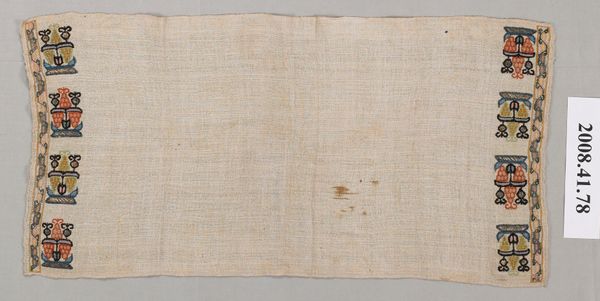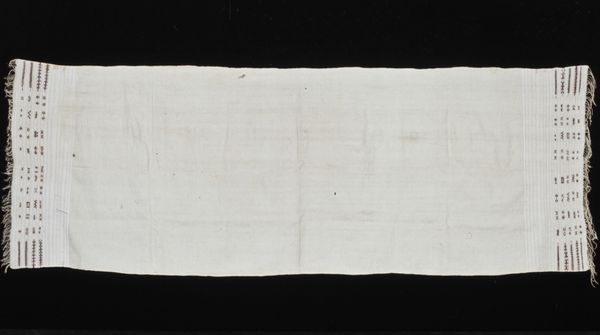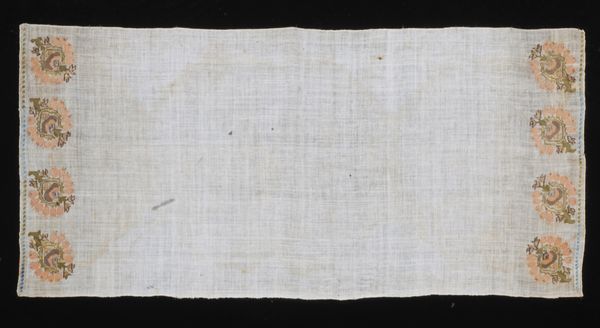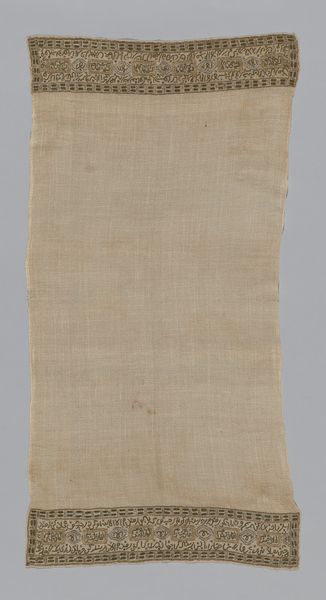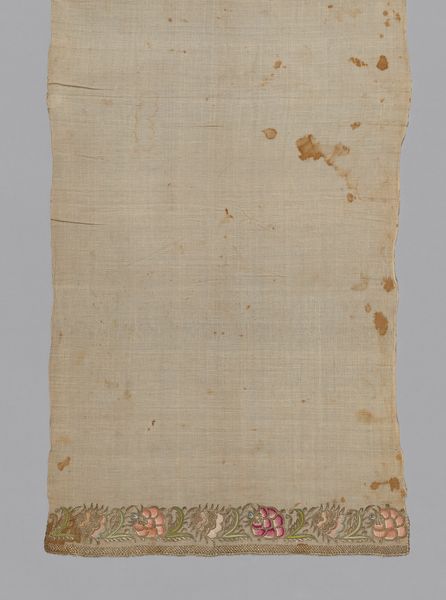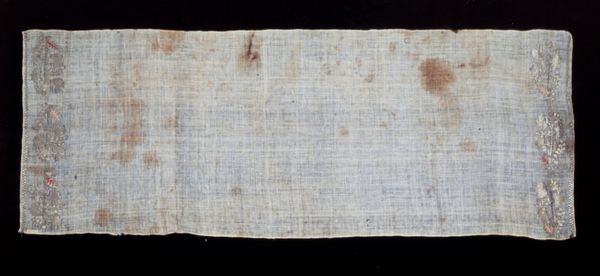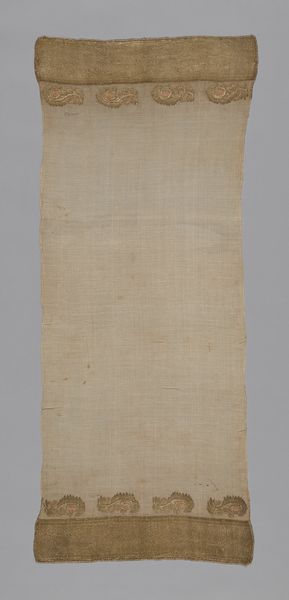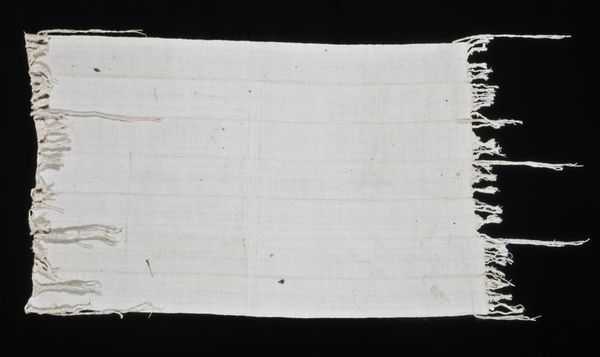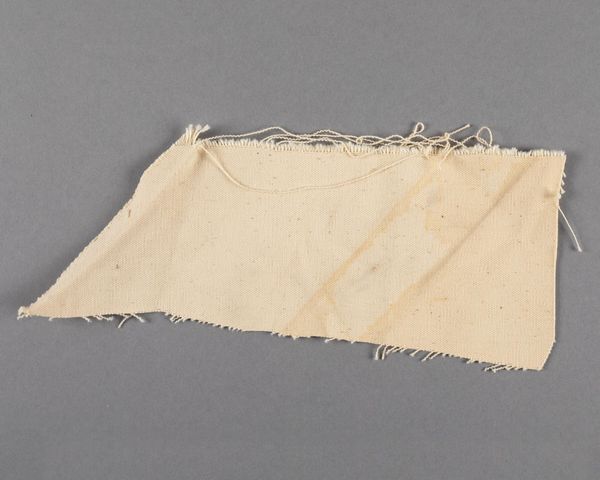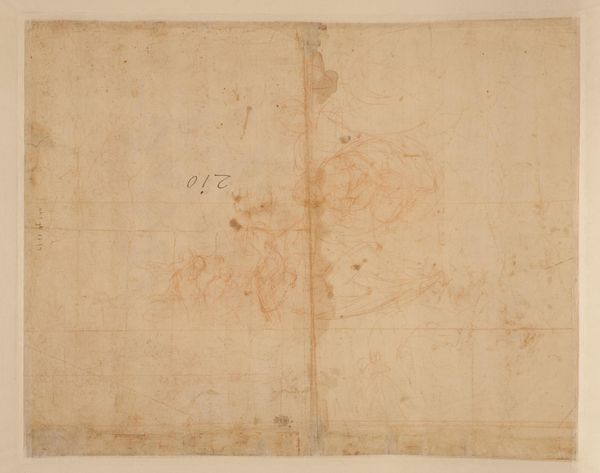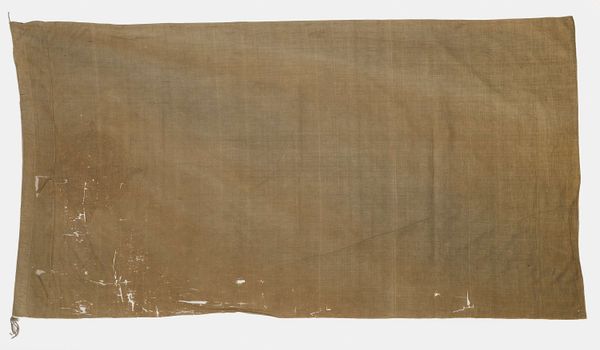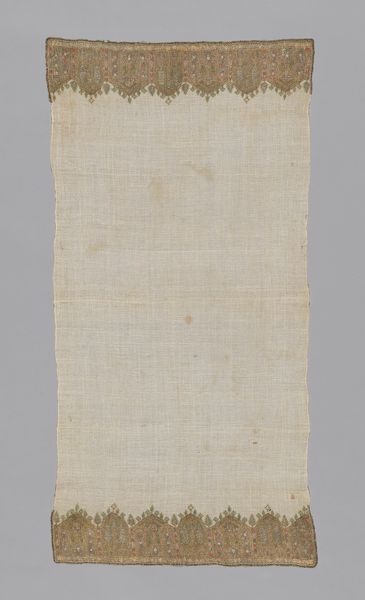
panel, textile, cotton
#
type repetition
#
aged paper
#
homemade paper
#
panel
#
reduced colour palette
#
textile
#
white palette
#
personal sketchbook
#
cotton
#
watercolour bleed
#
imprinted textile
#
sketchbook art
#
watercolor
Dimensions: 69 1/2 x 15 1/4 in. (176.53 x 38.74 cm)
Copyright: Public Domain
Editor: Here we have an Ottoman textile panel, likely from the late 19th or early 20th century, made with cotton and watercolor. It gives me a feeling of quiet contemplation. How do you see the visual elements working together? Curator: Note the rhythmic repetition of motifs along the edges of the panel. The almost primitive rendering of these forms, executed in a limited color palette, establishes a compelling visual field. Consider the contrast between the densely patterned borders and the vast expanse of unadorned cotton at its center. What compositional strategies are at play? Editor: It's like the edges are trying to contain or define the empty space, which creates an interesting tension. What about the choice of watercolor? Curator: The use of watercolor allows for subtle gradations of tone and a delicate bleed into the cotton fibers, blurring the sharp distinction between figure and ground. This lends the textile a quality of ephemerality and softens the otherwise rigid geometric structure. The reduced colour palette also accentuates the homemade qualities. The medium supports the motifs themselves. Editor: So, it’s not just decoration; the materials and the way they are used contribute significantly to the overall effect and the artwork’s impact. Curator: Precisely. The material properties are inextricable from the aesthetic experience. It shows that formalism can go hand-in-hand with the techniques used to make it. Editor: That’s a helpful way to think about it. Thanks for pointing out the way the technique elevates this piece and interacts with composition. Curator: A close reading of the elements provides an enriching interpretation, always.
Comments
No comments
Be the first to comment and join the conversation on the ultimate creative platform.
